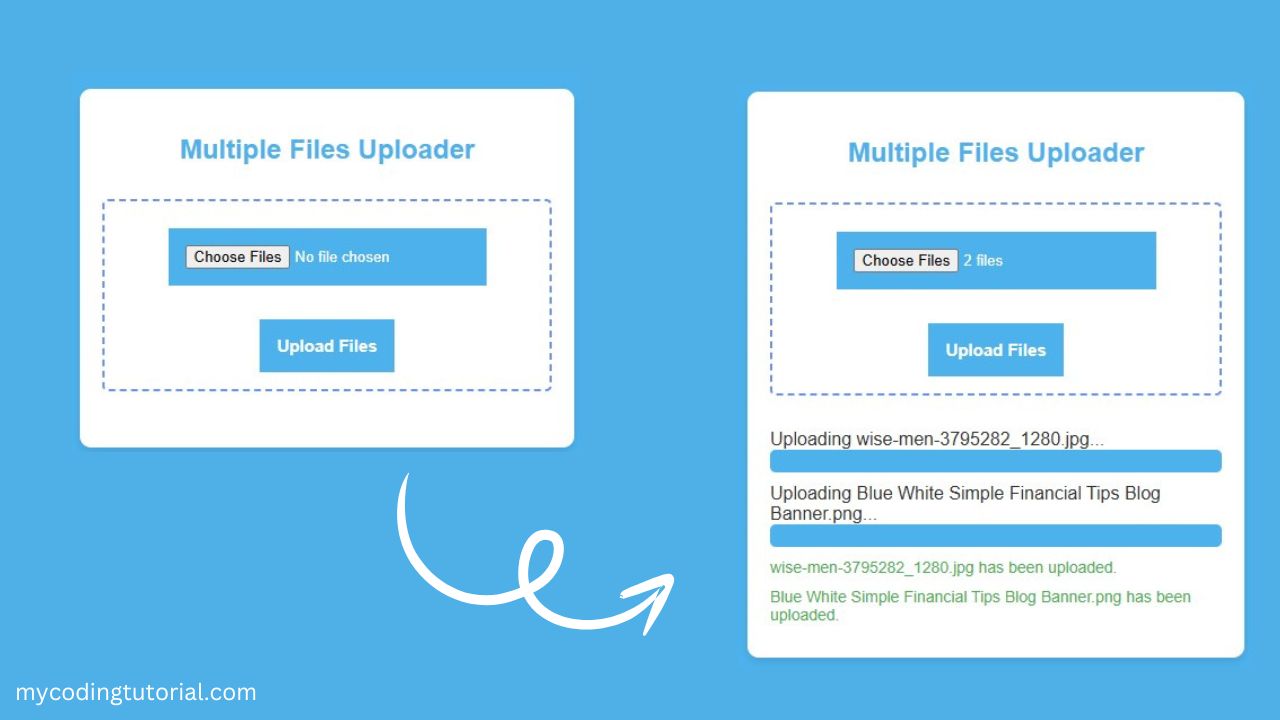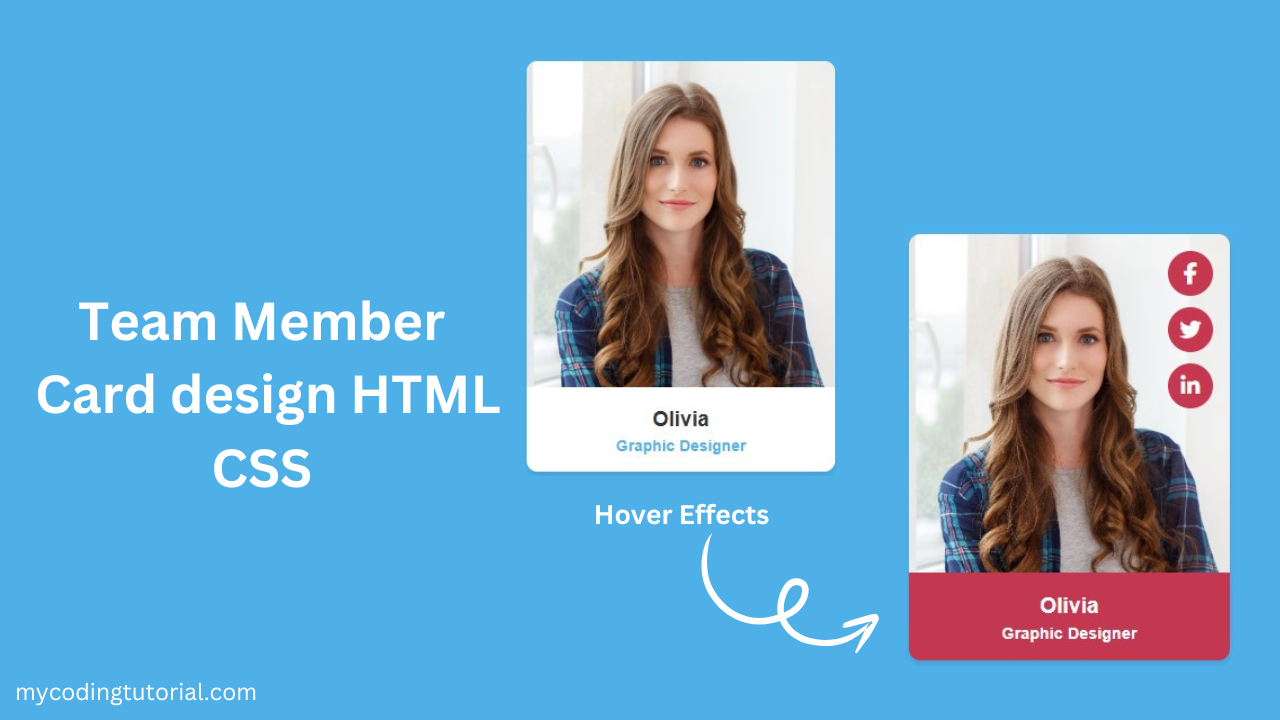A Sticky Navigation Bar (also known as a fixed or persistent navigation bar) is a user interface element that remains fixed at the top of the viewport while the user scrolls through a webpage. This design ensures easy access to navigation links at all times, improving the user experience, especially on content-heavy websites.
To make your sticky navigation bar mobile-friendly, follow these steps:
Responsive Design Principles
- Use media queries to adapt the layout for different screen sizes.
- Simplify the navigation bar for smaller devices.
2. Mobile Menu Toggle
- Include a menu icon (hamburger icon) for smaller screens.
- Use JavaScript to toggle the visibility of the navigation menu when the icon is clicked.
3. CSS for Small Screens
- Hide the navigation menu by default on smaller screens and display it as a dropdown when toggled.
- Ensure the menu is easily tappable with larger clickable areas.
Create index.html file and copy code and paste code our layout.
<!DOCTYPE html>
<html lang="en">
<head>
<meta charset="UTF-8">
<meta name="viewport" content="width=device-width, initial-scale=1.0">
<title>Sticky Navigation Bar /Code By Mycodingtutorial</title>
<link rel="stylesheet" type="text/css" href="style.css" />
<style>
</style>
</head>
<body>
<div class="banner">
<header id="header">
<div class="container">
<div class="logo">Mycodingtutorial</div>
<div class="menu-icon" id="menu-icon">☰</div>
<nav id="nav">
<a href="#">Home</a>
<a href="#">About</a>
<a href="#">Services</a>
<a href="#">Contact</a>
</nav>
</div>
</header>
</div>
<main>
<section class="section">
<h2>Sticky Navigation Bar</h2>
<p>Contrary to popular belief, Lorem Ipsum is not simply random text. It has roots in a piece of classical Latin literature from 45 BC, making it over 2000 years old. Richard McClintock, a Latin professor at Hampden-Sydney College in Virginia, looked up one of the more obscure Latin words, consectetur, from a Lorem Ipsum passage, and going through the cites of the word in classical literature, discovered the undoubtable source. Lorem Ipsum comes from sections 1.10.32 and 1.10.33 of "de Finibus Bonorum et Malorum" (The Extremes of Good and Evil) by Cicero, written in 45 BC. This book is a treatise on the theory of ethics, very popular during the Renaissance. The first line of Lorem Ipsum, "Lorem ipsum dolor sit amet..", comes from a line in section 1.10.32.
</p>
</section>
</main>
<script>
const menuIcon = document.getElementById('menu-icon');
const nav = document.getElementById('nav');
const header = document.getElementById('header');
menuIcon.addEventListener('click', () => {
nav.classList.toggle('active');
});
window.addEventListener('scroll', () => {
if (window.scrollY > 50) {
header.classList.add('scrolled');
} else {
header.classList.remove('scrolled');
}
});
</script>
</body>
</html>Create style.css file and copy code and paste code our layout.
/* Reset styles */
* {
margin: 0;
padding: 0;
box-sizing: border-box;
}
body {
font-family: Arial, sans-serif;
line-height: 1.6;
}
header {
position: sticky;
top: 0;
background: rgba(0, 0, 0, 0.7);
color: white;
padding: 15px 20px;
z-index: 1000;
transition: background 0.3s;
}
header.scrolled {
background: #d3303e;
}
.scrolled nav a:hover {
background: #fff;
border-radius: 5px;
color: #d3303e;
}
header .container {
display: flex;
justify-content: space-between;
align-items: center;
}
.logo {
font-size: 1.5rem;
font-weight: bold;
}
nav {
display: flex;
gap: 20px;
}
nav a {
color: white;
text-decoration: none;
padding: 5px 10px;
transition: background-color 0.3s;
}
nav a:hover {
background: #d3303e;
border-radius: 5px;
}
.menu-icon {
display: none;
font-size: 1.5rem;
cursor: pointer;
}
@media (max-width: 768px) {
nav {
display: none;
flex-direction: column;
background: rgba(0, 0, 0, 0.9);
position: absolute;
top: 50px;
right: 20px;
padding: 10px;
border-radius: 5px;
width: 200px;
}
nav.active {
display: flex;
}
.menu-icon {
display: block;
color: white;
}
}
main {
padding: 20px;
}
section {
padding: 50px 0;
}
.section:nth-child(even) {
background: #f4f4f4;
}
.banner {
background: url('image-menu.png') no-repeat center center/cover;
color: white;
text-align: center;
position: relative;
height: 600px;
}Key Features:
- Sticky Header: The navigation bar remains fixed at the top as you scroll.
- Responsive Layout: Media queries adapt the layout for small screens.
- Hamburger Menu: A menu icon toggles visibility on mobile devices.
Best Practices:
- Touch-Friendly Design: Ensure buttons and links have enough padding for easy tapping.
- Performance Optimization: Minimize JavaScript and CSS for better performance on slower devices.
- Testing: Test the navigation bar across different devices and browsers to ensure compatibility.
Would you like help implementing this in your existing code?
Conclusion
The Sticky Navigation Bar is a crucial design element for enhancing website usability. By keeping navigation links accessible as users scroll, it streamlines navigation, reduces frustration, and improves the overall user experience. Its implementation with modern web technologies like CSS (position: sticky) and JavaScript (dynamic behaviors) ensures flexibility and responsiveness across devices.
A well-designed sticky navigation bar can also improve aesthetics by incorporating:
- Transparency effects, which maintain focus on the content.
- Dynamic color changes to indicate interaction or scrolling.
- Mobile-friendly menus for seamless navigation on smaller screens.
Whether for a corporate website, blog, or e-commerce platform, a thoughtfully crafted sticky navigation bar ensures users always stay connected to the site’s main features.
Would you like additional customization for your sticky navbar or further guidance?





